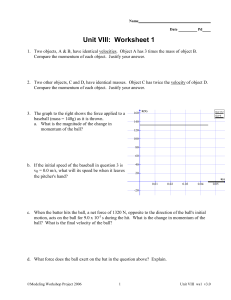

The change in momentum of that object, like the change in momentum of this ball. On an object, like this ball, that should just equal If you're talking about the net impulse, in other words, the impulse from all forces But, there's an alternateįormula for impulse. Is exerting on the ball, so I can't use this formula I don't know the force that this person's face So, if we knew the force on this ball, we could use this formula Is equal to that force, multiplied by how long thatįorce was acting on the object. In other words, the impulse, from a force, So the jimpulse, or the impulse, is defined to be the forceĪcting on the object, multiplied by the time duration during which that force is acting. I end up calling it jimpulse, just so I can remember that it's impulse, and there's a J for it. The ball from the person? Now, the definition of impulse, we use the letter J for impulse, that always seemed a little weird to me. So, knowing this information, we can ask all kinds of questions. Kind of compressed and then recoils and expands again, let's say the time that it's actually in contact is about. It comes in with 10, leaves with five, and let's say that time, time right here, the time period that it's actually in contact with the person's face, let's say the time, when the ball is getting So it's probably gonna recoil with a little less speed In at 10 meters per second and let's say it leaves at a speed of five meters per second. Let's say the ball comes in at a speed of about 10 meters per second. Scientifically speaking, to talk about the impulse, momentum, force, time relationship, so let's do that. And although, unfortunate for this person, it's a wonderful opportunity, This may or may not have happened to you. This person right here is about to play dodgeball.


 0 kommentar(er)
0 kommentar(er)
